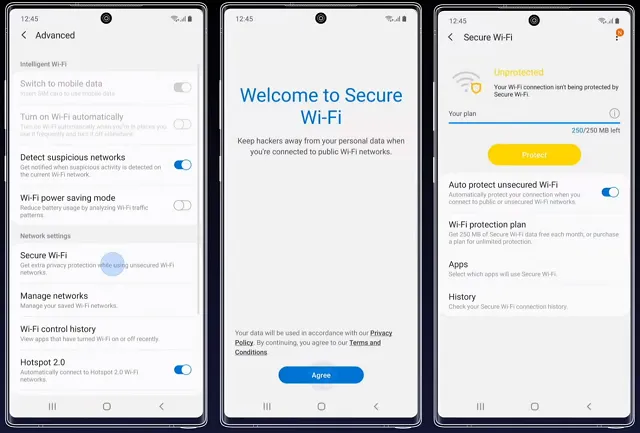Jakarta, Selular.ID Smartphones have become an important thing that accompanies us to work, live, and play. For some people, smartphones are even the only thing we take out of the house, replacing laptops and wallets.
Although today most people are aware of the dangers that hackers pose to laptops and computers, we also need to realize that smartphones are also vulnerable to cyber attacks. Hackers are after objects that are being used a lot and nowadays, those objects are mobile devices. That’s why keeping smartphones safe is even more important, and Samsung claims to continue to innovate to protect consumers and consumer data from emerging threats.
Billions of smartphones around the world today are filled with sensitive personal and business data, providing endless opportunities for hackers to steal and sell that personal information. In fact, cybersecurity company IronNet reports that cyberattacks have increased by 168% between May 2020 and May 2021, and attacks on smartphones are one of the biggest cybersecurity threats in the Asia Pacific region.
In order to keep users safe and protected, Samsung has Samsung Knox which provides comprehensive protection throughout the lifecycle of a user’s device. Here are five scenarios of potential cyberattacks that can occur when device security is compromised, and how Samsung Knox protects users from these threats.
Scenario 1 Cyber Attack: Backdoor access without consent
Outside of Samsung, developers routinely create backdoors or ‘secret doors’ for apps and even mobile operating systems (OS) so they can get easy access when they need to troubleshoot. However, hackers can find this backdoor, which usually bypasses one or all of the cybersecurity on the device in question.
To prevent backdoor access without consent, do not download unauthorized or unauthorized apps. Downloading software other than the manufacturer installed from the start to gain full access to the device’s operating system can also invite malware or spyware leading to backdoor access without consent.
Samsung designs, manufactures, and validates every computer chip, every cable, and every hardware component before using it to manufacture smartphones in factories. Control over design, manufacturing and assembly, ensuring a secure supply chain that prevents unauthorized backdoor access on devices.
Scenario 2 Cyber Attack: Leaked, weak, or reused passwords
Along with the times, users continue to create new accounts for various digital services, ranging from online doctor consultation services, online transportation platforms to new e-commerce. Unwittingly this provides more avenues for hackers to exploit.
As IBM found in its August 2021 survey, 86% of consumers in Asia Pacific admit that they reuse the same password across multiple online accounts. This is a bad habit of data privacy, where a single attack can leave a user’s entire internet footprint vulnerable to hackers.
Samsung devices are equipped with innovative biometric authentication technologies, such as Ultrasonic Fingerprint, so access to user data can be protected even if the device is lost or stolen. Known as Samsung Pass, this biometric authentication tool also allows users to easily access login credentials without needing to remember countless usernames and passwords. To enhance data protection, Samsung has also equipped the device with Knox Vault, a secure processor that operates independently of the main CPU. Knox Vault securely isolates the user’s biometric data from the rest of the phone, so no one can get hold of the user’s data.
Scenario 3 Cyber Attack: Free Wi-Fi that turns out to be not completely free



The free Wi-Fi hotspot is a boon to everyone who needs Internet access on their mobile device for work or play. However, public Wi-Fi services provide an opportunity for hackers to steal data, as data that users send over the web (such as credit card information when making online purchases) may fall into the hands of hackers over public Wi-Fi networks.
For everyday browsing, Secure Wi-Fi on Samsung devices encrypts outgoing internet traffic and disables tracking on apps and websites. This allows users to browse the internet safely on public Wi-Fi without fear of security breaches.
Scenario 4 Cyber Attack: A phishing attack that retrieves sensitive data
Phishing is a type of attack in which cybercriminals trick their victims into submitting sensitive information or installing malware, masquerading as links, attachments, or even legitimate apps, on their devices.
Once hackers have access to a user’s sensitive information, they can use it to demand ransom from the user, steal personal information, commit other crimes, and even make purchases with the user’s credit card information.
Samsung protects users from these threats through Device Protection in Samsung Device Care, which continuously scans the device for malware or suspicious activity and warns when users install malicious apps by detecting it through McAfee protection.
In addition, Samsung Secure Folder keeps data secure and isolates problematic apps in folders to keep apps away from users’ personal information.
Scenario 5 Cyber Attack: Zero-day Vulnerability



Given that hackers and cyberattackers are constantly trying to hack devices, they are always on the lookout for zero-day vulnerabilities. A zero-day vulnerability is a vulnerability in a system or device that has been discovered but has not been patched. This can be very dangerous because cybercriminals target weaknesses in systems before developers or the public are aware of them.
Samsung Knox offers protection in real time, always actively protecting the user’s device from data or malware attacks. This means that unauthorized attempts to access or modify the phone are blocked in real time.
When a user reboots their Samsung smartphone, Secure Boot is enabled to detect unauthorized software and block attempts to infiltrate the device through military-grade layered security. If the smartphone is booted in an unapproved state, Samsung Knox will automatically lock apps that contain sensitive data such as Samsung Pass, Secure Folder, or Samsung Health.
Smartphones have become an essential part of our digital lives, whether from home, in the classroom, or even in the office. With new threats emerging in cyberspace that are increasingly risky, we must remain vigilant and play an active role in keeping ourselves and our loved ones safe in this digital world.
–


